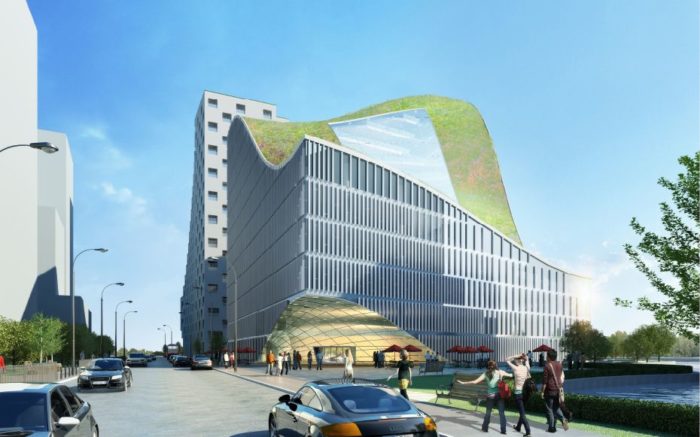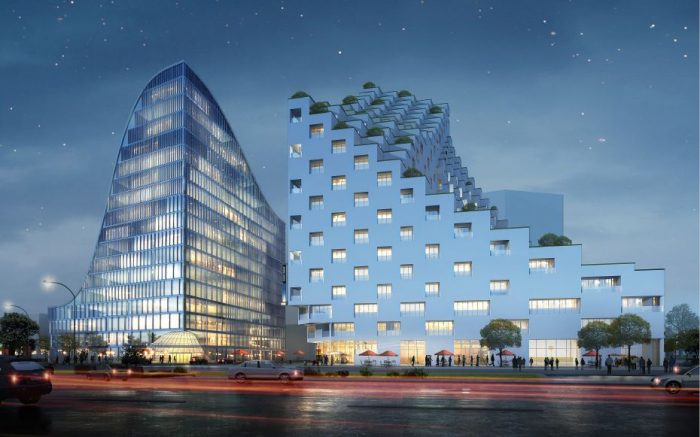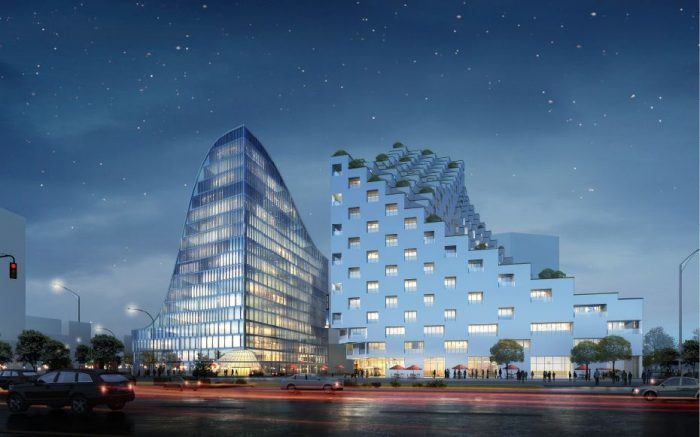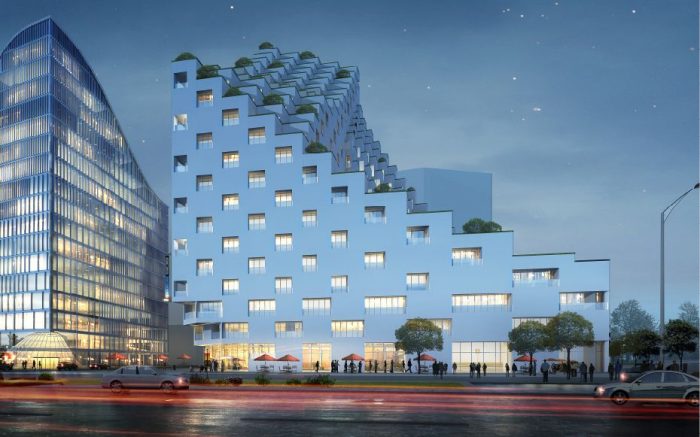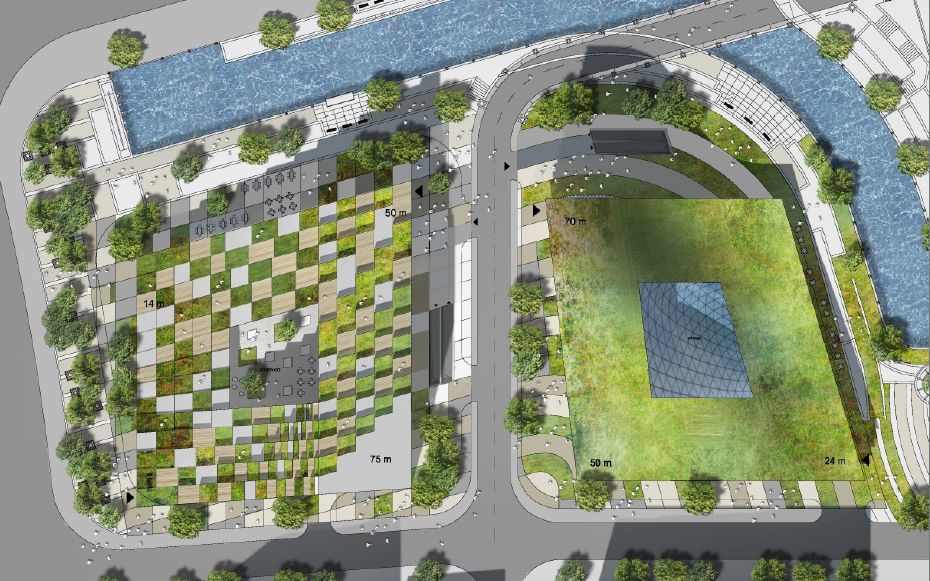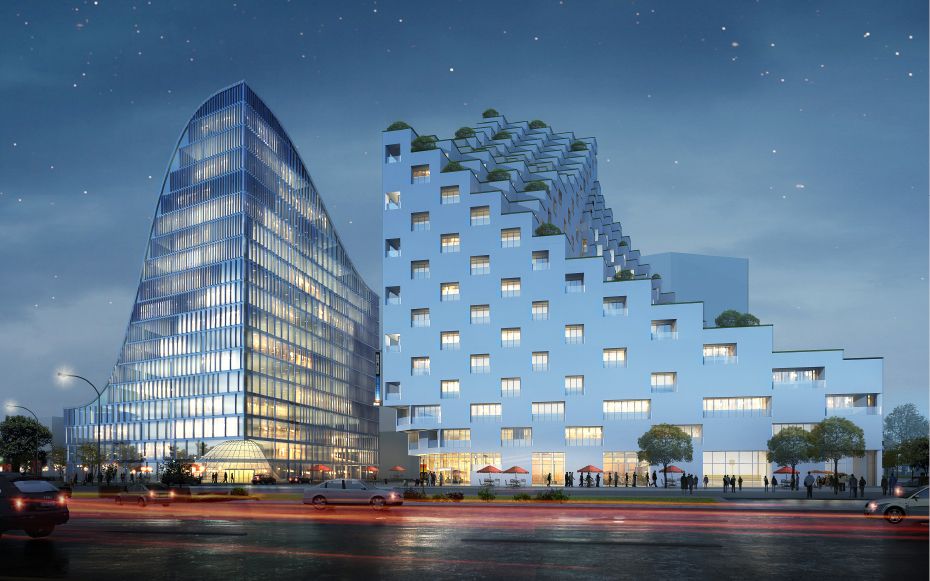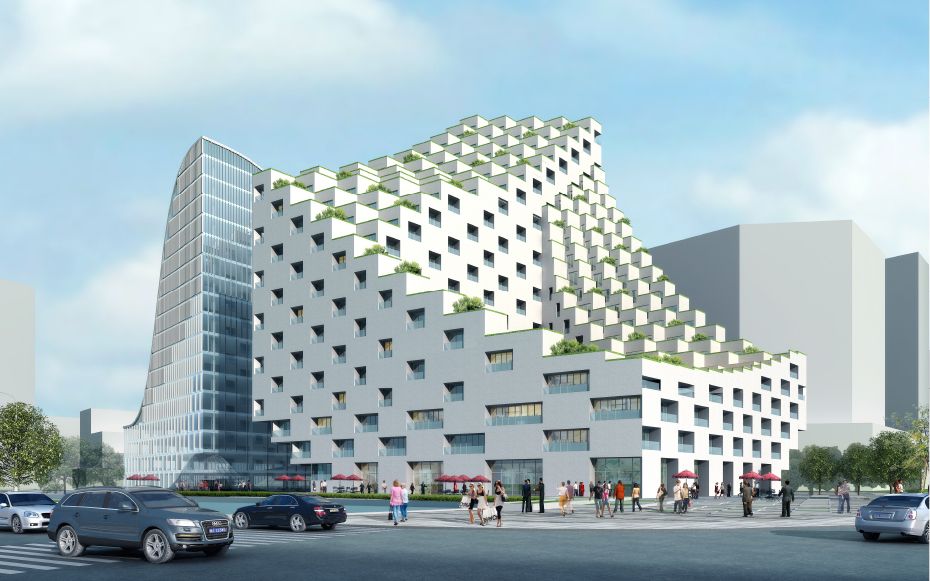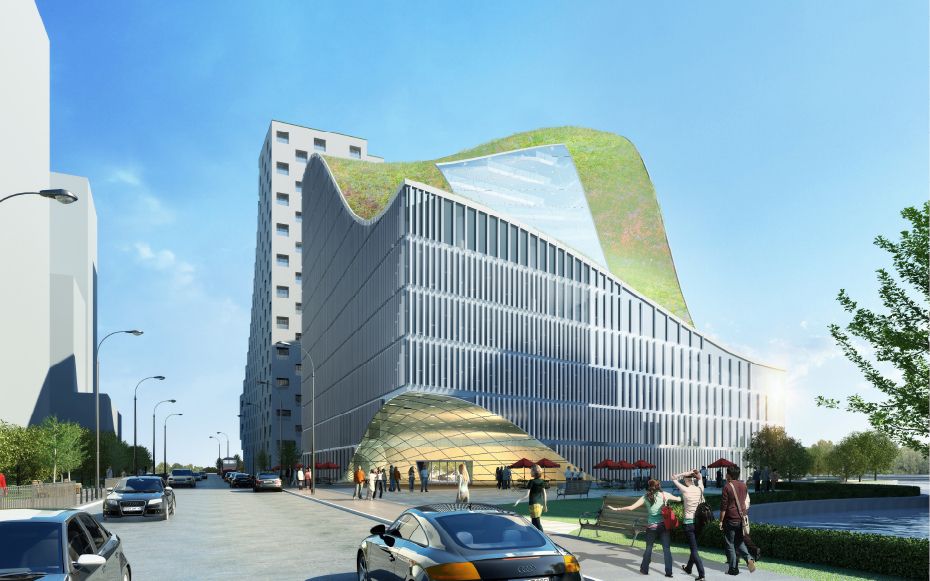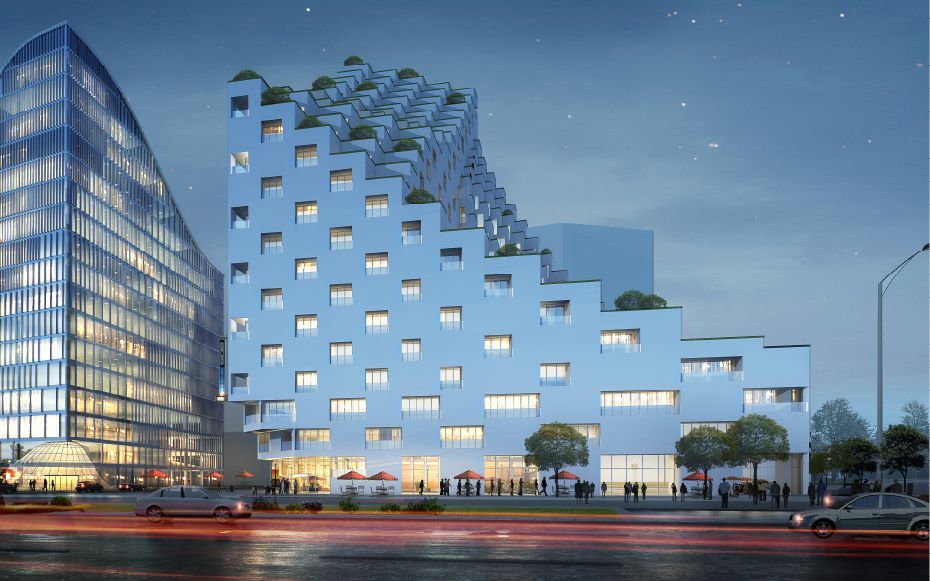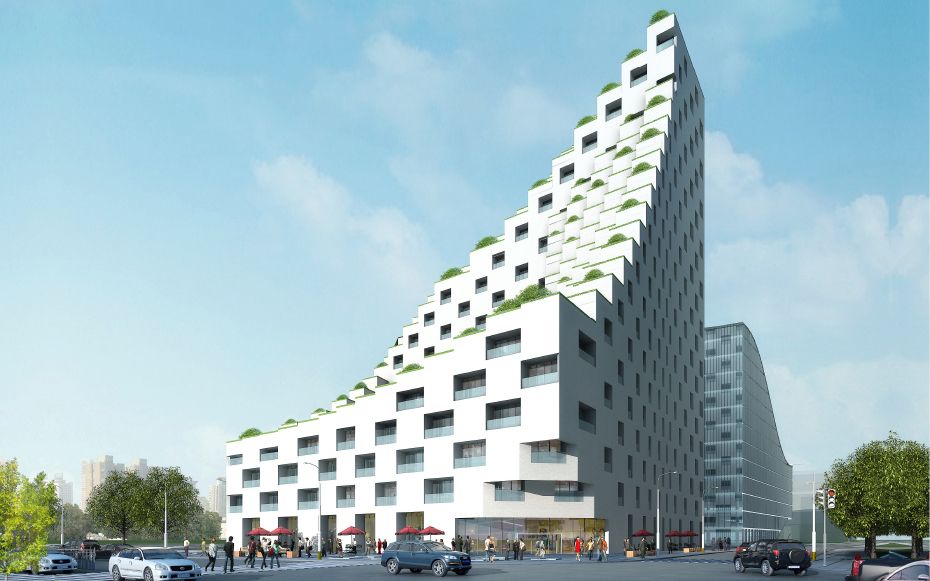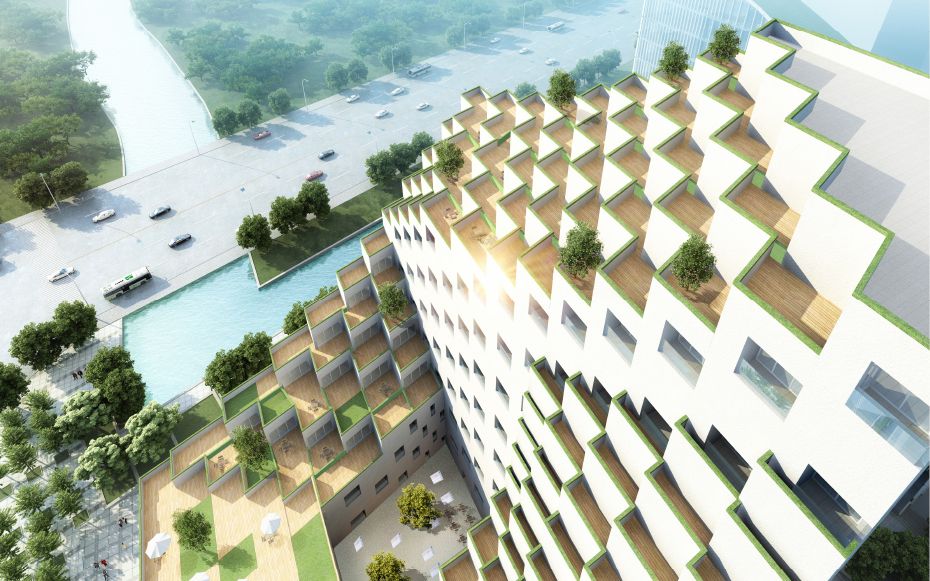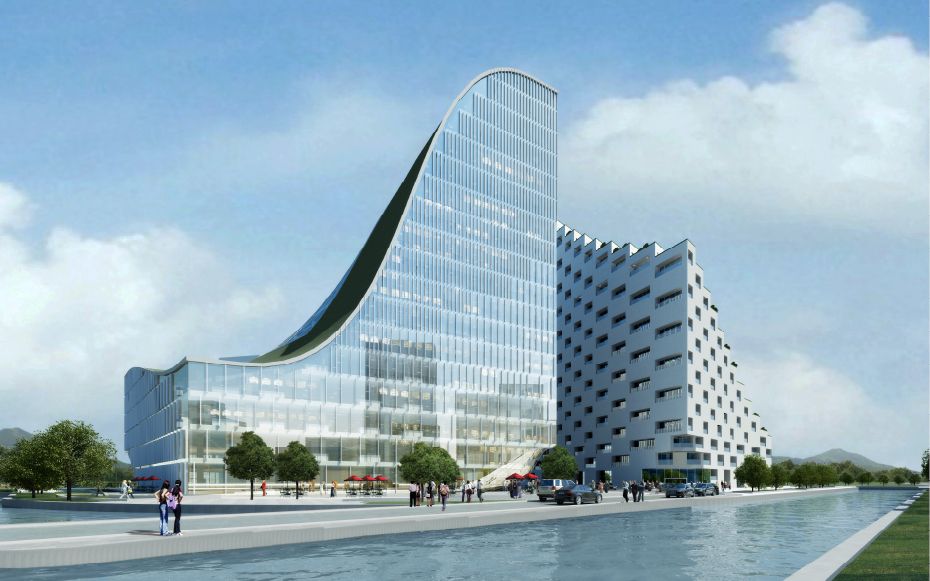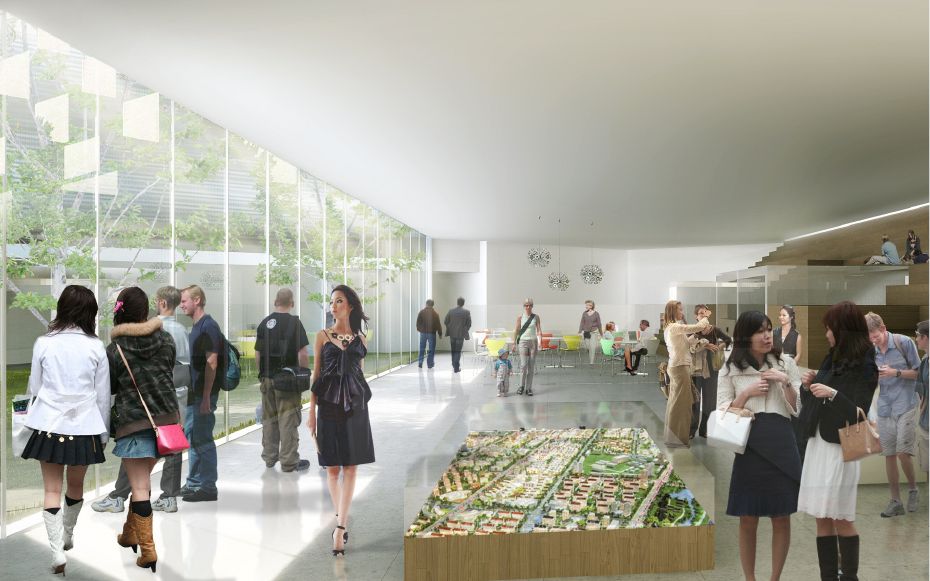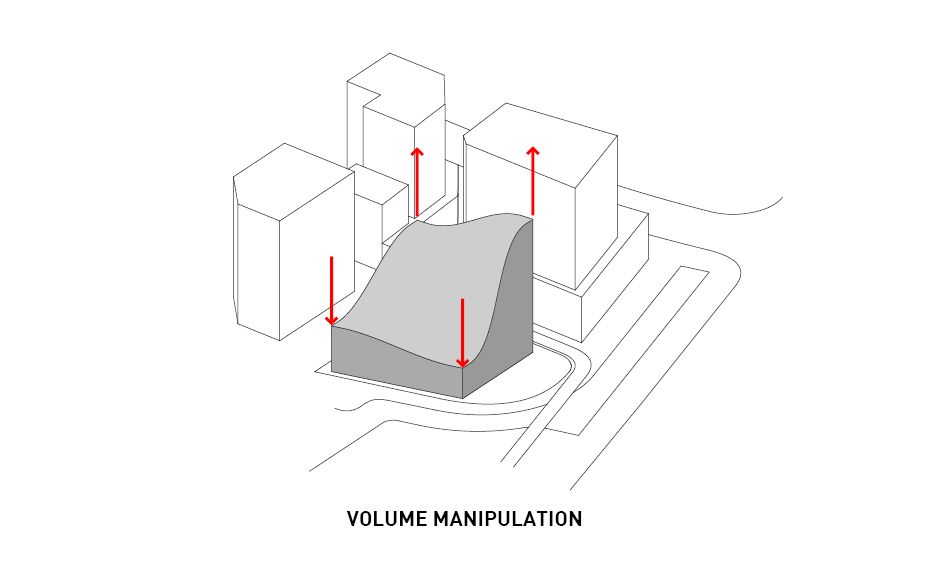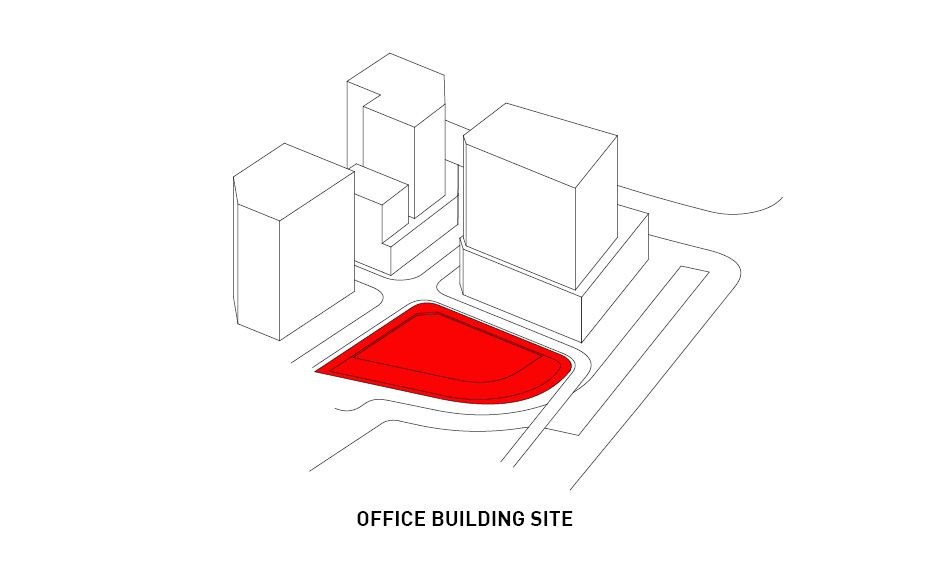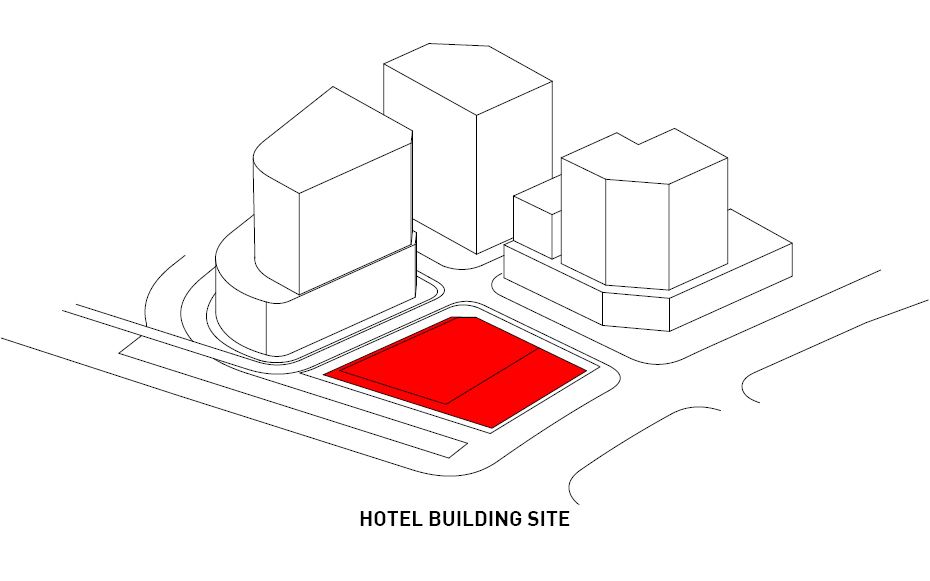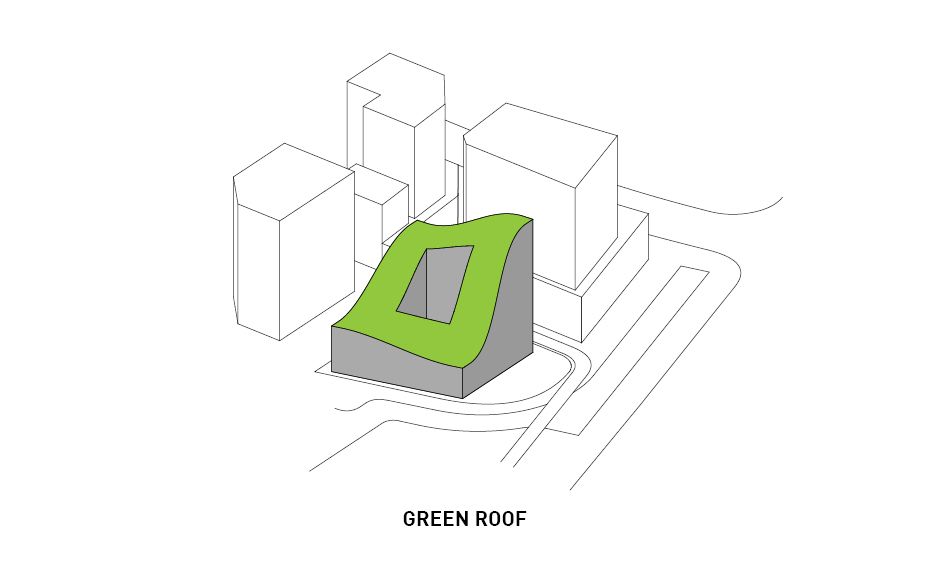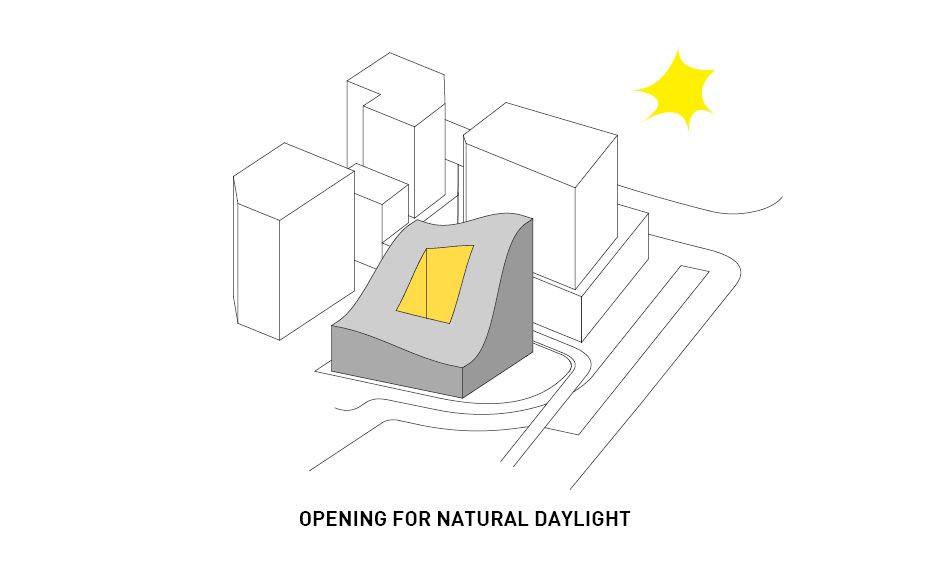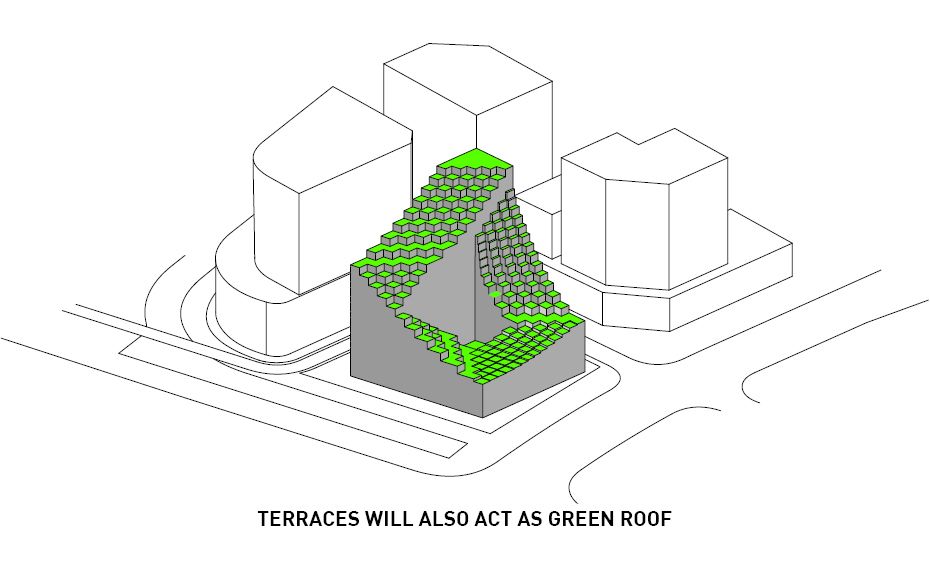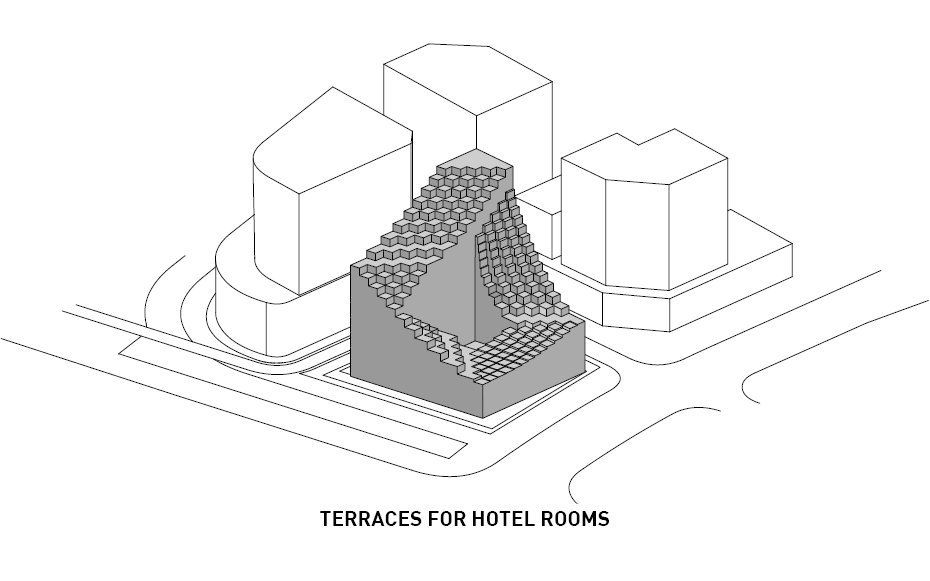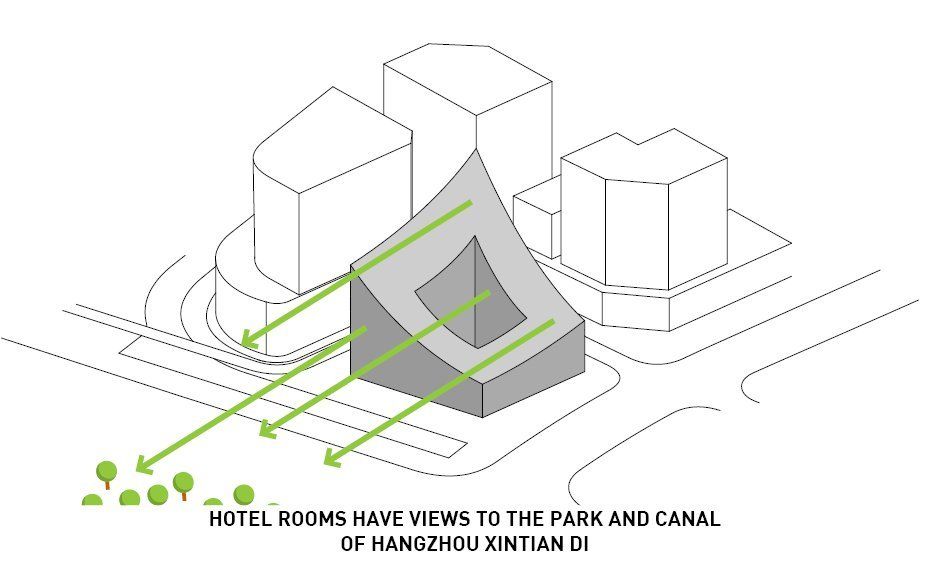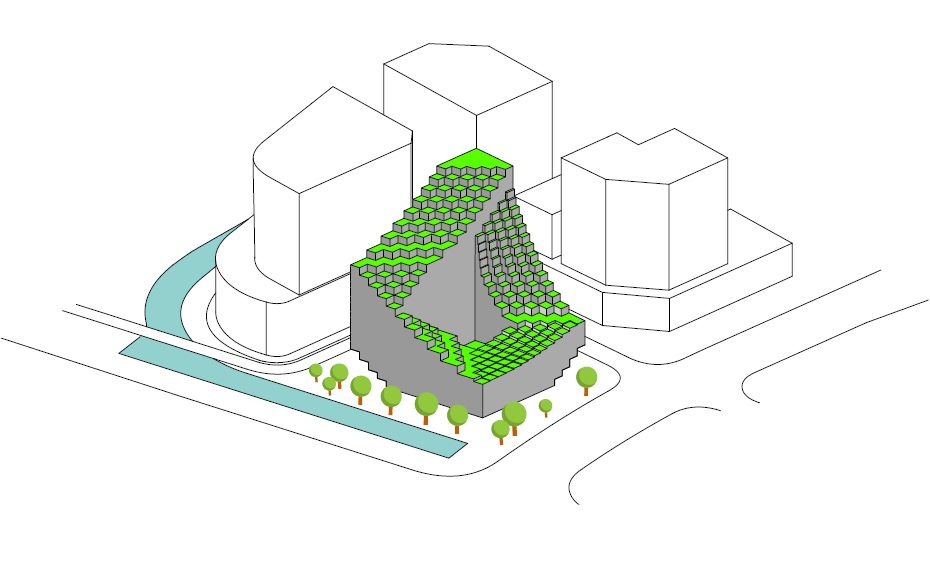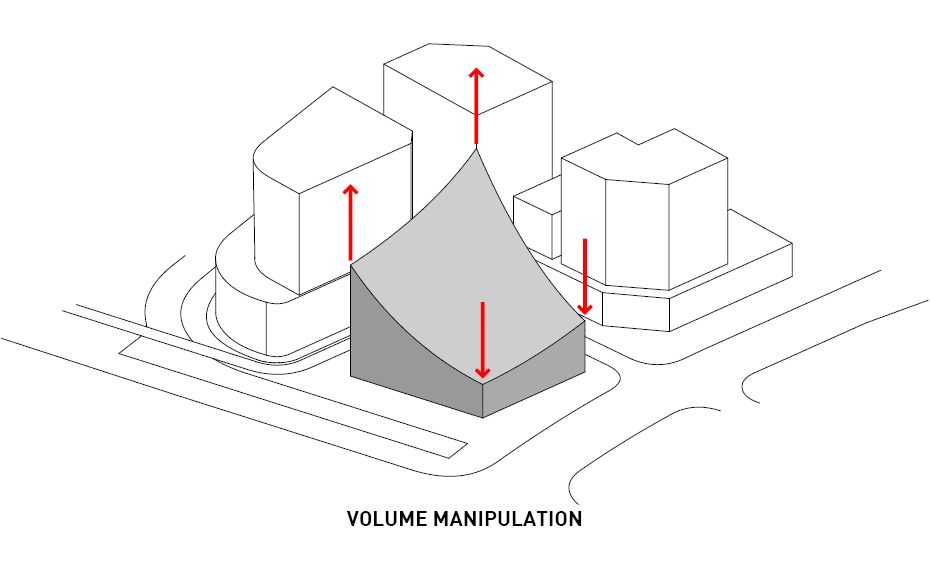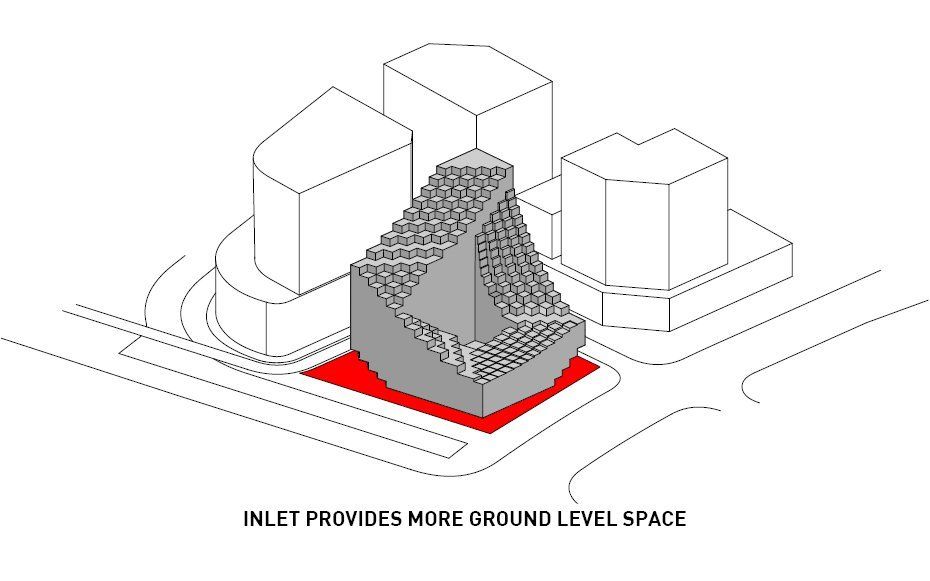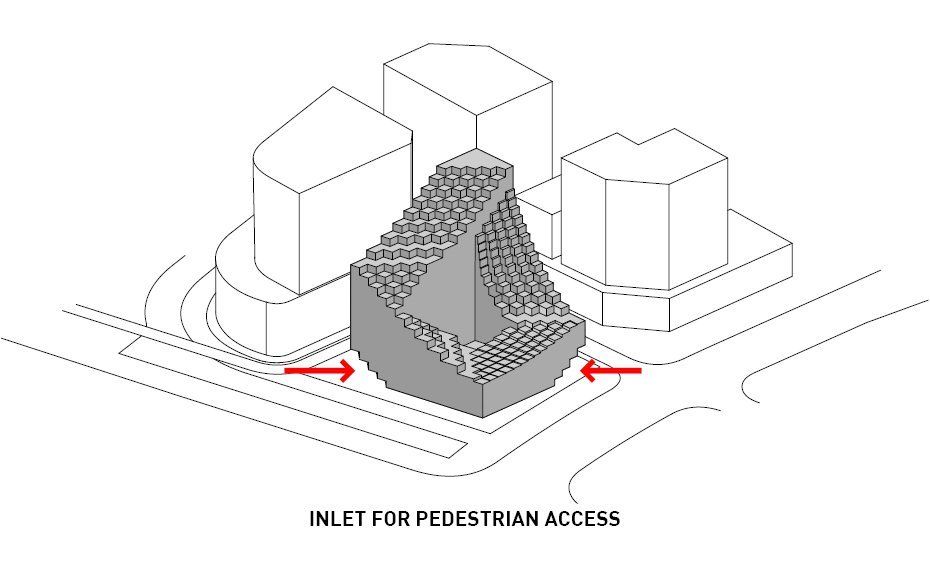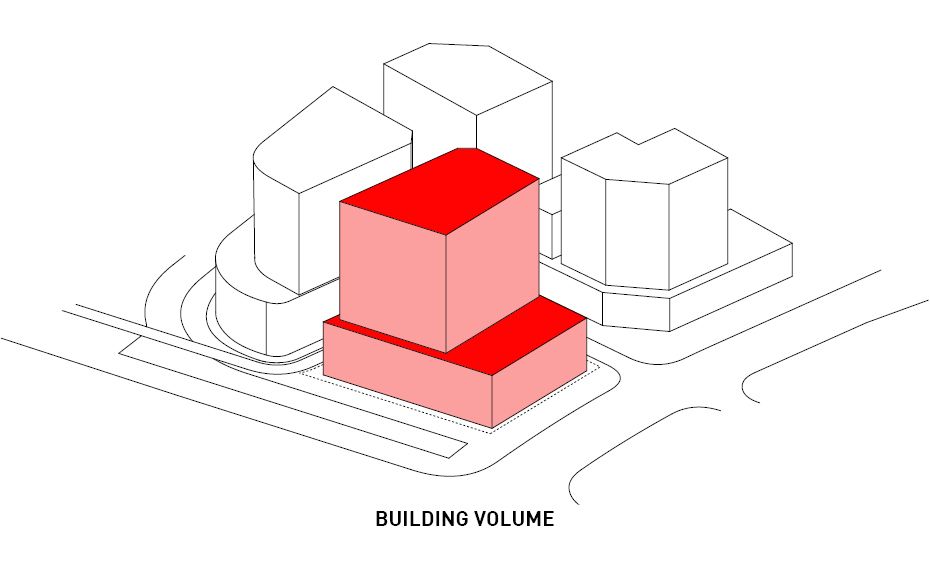With hybrid buildings becoming the essence of architecture as of recently, it is refreshing to come across a design that steps away from this movement and strive to highlight the separation of program into two separate buildings. The Hangzhou Waves proposal by JDS consists of two structures, a hotel and office building, for the financial district of Hangzhou Xintiandi of Hangzhou, China. This award winning design takes two sloping volumes, fairly similar in nature but vastly different in program, and investigates the relationship between the two forms.
Although each building has a different exterior expression that is appropriate for the function of the building, the forms themselves were guided by the same attributes regarding sunlight, green roofs, and an active ground plane. The strong relationship between the buildings is emphasized by the loose illusion that the structures mirror one another. The hotel utilizes pixelated terraced volumes, providing little personal gardens outside some of the rooms, and rising to their highest points around an inner courtyard. The office building’s sleeker profile slopes down to a more public scale while providing views of the surrounding park and canal.
Each building went through nearly an identical process in their design. First the site was determined to understand the general floor plan of each structure, and then the forms went through volume manipulation where the corners were either pulled up or down. From that point the center courtyard was determined, allowing an opening for natural lighting to make its way through the building easier. Finally a green roof was incorporated and parts of the forms were lifted to create an inlet for pedestrian access.
As much as I respect the decision to design two buildings instead of trying to incorporate a hotel within an office building, or vice versa, I feel as though by creating two forms using the same process it detracts from the purpose of having two buildings. It is clear that gestures were made on the exterior design to better facilitate the different functions of the buildings, which I find to be highly appropriate, but the same could have been accomplished even if it were only one building. The efforts made by JDS to step away from the popular trend to dump everything a client needs into one building is commendable, as it allows the opportunity for more architecture to be designed and created. Even though The Hangzhou Waves proposal is an elegant one, it would have been nice to see the design pushed a little further so that a strong relationship was still achieved without essentially designing the same building twice.
Courtesy of JDS
Courtesy of JDS
Courtesy of JDS
Courtesy of JDS
Courtesy of JDS
Courtesy of JDS
Courtesy of JDS
Courtesy of JDS
Courtesy of JDS
Courtesy of JDS
Courtesy of JDS
Courtesy of JDS
Courtesy of JDS


